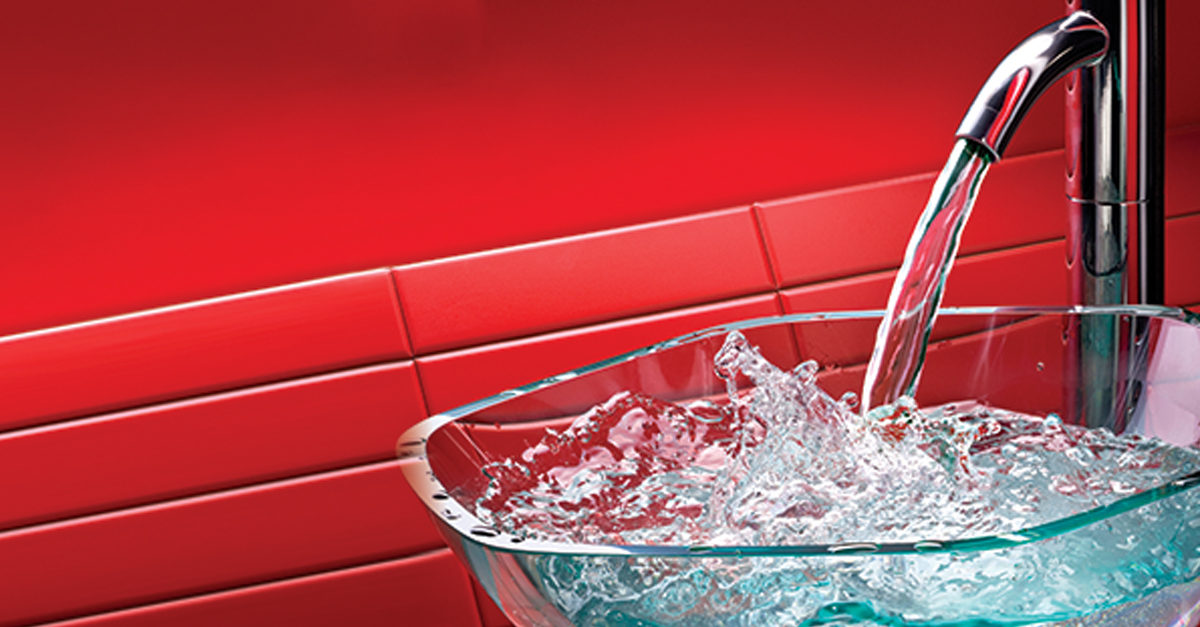Touting large kitchens, high-volume laundry rooms, and multi-faucet public restrooms, commercial buildings require a significant amount of water to operate each day.
With that in mind, it may not come as a surprise that the commercial and institutional sector accounts for 17 percent of public water supply withdrawals, according to the U.S. Environmental Protection Agency (EPA), and represents the second largest consumer of publicly supplied water in the entire country.
Some industry members, however, are trying to change that statistic.
“Water conservation efforts in commercial buildings have been more of a focus in the last five years, especially in places like California, where local laws exist and municipalities are pushing for it,” says Alan France, vice president, janitorial excellence at national facility management service provider ABM. “[But] in areas that don’t have a drought situation or regulations, it’s still a focus.”
Withdrawing from Restroom Water Use
The EPA’s WaterSense program estimates if a 2,500-occupant office building replaced its older, inefficient toilets and urinals with approved versions and installed 0.5 gallon-per-minute aerators on standard faucets, it could save nearly 3.9 million gallons of water—and more than us$34,000 in water expenses—per year.
Though the program itself hasn’t yet identified potential cleaning-related savings, there are ways for cleaning providers and crews to reduce water use, and in turn, lower their building’s utility bills.
“Cost savings can vary greatly, depending on where they are and what the local water rates are,” says Bill Christiansen, program manager for the nonprofit Alliance for Water Efficiency. “But it’s certainly something that motivates people.”
With restrooms, the stakes are high; research indicates restrooms in particular play an important role in customer perception. Nearly three-fourths of consumers believe a bad restroom indicates poor management; another two-thirds say it lowers their opinion of the company and shows the business doesn’t care about customers, according to a survey from commercial plumbing manufacturer Bradley Corp.
Therefore, cleaning providers need to walk a fine line between using enough water to produce an undeniably sanitary, radiant restroom and wasting a sizeable amount of both a natural resource and money.
Audit and Downsize
To identify possible problem areas, Christiansen recommends cleaning professionals track how much water they pour, utilize, and dispose as they move through their standard cleaning routine. “People are becoming more aware that if they save water, that can potentially help the bottom line,” Christiansen says. “Knowing how you use water allows you to manage it.”
Some water reduction opportunities should be clear once you’ve audited your cleaning process. Others may not be as immediately obvious, such as:
Treating touchless items gently: To prevent water loss from hands-free faucets, the Alliance for Water Efficiency recommends shortening sensor-activated faucets’ on-off cycle; moving from 15 to 12 seconds can result in a 20 percent water use reduction.
During cleanings, professionals can also limit the amount of water they accidentally deploy.
France says his cleaners have learned to block sensors with their hands as they wipe the faucets; using this technique, each faucet only has one activation instead of multiple during the cleaning process.
Making mixing simple: Choosing closed dilution station systems with built-in metering devices can ensure cleaning professionals don’t add excess water to their cleaning solutions by mistake.
“Any time there’s manual mixing, there’s always a chance of diluting too much or not enough, which obviously is never ideal,” France says. “You want to be as optimal as possible so you’re not overusing it and having savings, but ensuring the chemical will clean exactly the way it’s intended to.”
Curbing commode use: Small reductions can add up over time.
The Portland Water Bureau’s water efficiency program—which offers free assessments for local Oregon businesses—has renovated parts of its restroom to decrease water use, such as installing dual flush toilet handles that use up to 30 percent less water.
Some buildings may not have the budget for remodeling work; but they can enact minor changes—such as flushing toilets once, instead of twice, to get rid of post-cleaning product residue. Jeff Sandberg, Portland Water Bureau water conservation programs coordinator, says, “Avoiding one flush, assuming restrooms are cleaned once per day, would save 60,000 gallons a year in a typical 15-story office building.”
Using sinks sparingly: Remind employees never to leave a faucet running unnecessarily. If a restroom doesn’t have sensor-enabled faucets, only turning them on to fill buckets and other cleaning containers will help curb potential water loss.
Fixtures and Frequency
When calculating the potential amount of water cleaning process changes can save, it’s important to factor in frequency.
Take men’s restrooms, for example—one of the biggest sources of water use in commercial buildings, according to Joseph Colón, executive account manager at New York commercial cleaning and janitorial company Busy Bee Cleaning Service. He estimates they can require 20 percent more water to clean than women’s restrooms.
Additionally, if a building has installed waterless urinals, even though they are designed to save water, they may require more maintenance than standard models—quick cleanings every few hours.
Benefitting Buildings and Business
According to the National Drought Resilience Partnership, a group composed of seven federal agencies, significant portions of the United States have experienced extreme to exceptional drought conditions since 2012.
As the United States continues to undergo severe dry spells and other climate change-related effects, the EPA predicts building owners and operators will have a heightened awareness of water conservation needs—and ways they can reduce costs through water efficiency.
Jonathan Barnett, founder and CEO of Oxi Fresh Carpet Cleaning, agrees. “People are getting more and more educated and care more about the environment,” Barnett says. “There are more incentives, whether from different states or tax credits, for buildings to be green and use less water now than there were 10 years ago. Things are changing and improving.”
As a result, in-house facility managers may also look to external cleaning providers to help them weave water reduction efforts into their building maintenance, which in turn, can help building service contractors that are looking to increase business.
For example, Busy Bee has found that if research indicates a prospective client might be interested in green cleaning, emphasizing its water-reduction efforts during walk-throughs can help close the deal. “More clients have been asking us about water use; some will ask about different cleaning methods before they sign the actual contract,” Colón says. “What they pay for water can be a big concern.”
Beyond Bathroom Water Reduction
In addition to commercial restroom-related efforts, other areas—such as floors and building exteriors—may also offer a chance to curtail water use.
Opting for an autoscrubber machine, for example, instead of a pressure washer, can lower water needs. “Scrubbing involves minimum water usage because you’re putting down a specific amount [of water],” says Alan France, ABM’s vice president, janitorial excellence. “When you do pressure washing, you’re using the water flow to clean. There is less control over the amount of water used.”
Additionally, consider altering your sidewalk cleaning schedule and, following the Portland Water Bureau’s lead, forgoing walkway washes in lieu of other techniques.
“Can you clean as-needed instead?” asks Water Conservation Programs Coordinator Jeff Sandberg. “When cleaning is needed, can you use a broom, vacuum, or blower, if only every other time?”




